Thanks to the growing popularity of sliding glass wall systems, innovative pools, outdoor fireplaces, stylish patio furniture, durable fabrics, and high-tech outdoor televisions, architects and interior designers are doing more than just designing coastal homes—they’re designing outdoor spaces too.
“These spaces now rival interiors for their amenities and the detail that goes into their planning,” says Tom Stringer, founder
Homeowners are approaching swimming pools in a similar manner. “Technology is allowing pools to accommodate more than just swimming,” says Alley Daniel, a project manager with OBM International. She points to companies like Akvo Spiralift and AGOR Engineering Enterprises, both of which specialize in movable pool floors. Homeowners can change the depth to create shallow wading pools, for example, for sunbathing on chaises, or completely conceal the pool’s existence altogether.
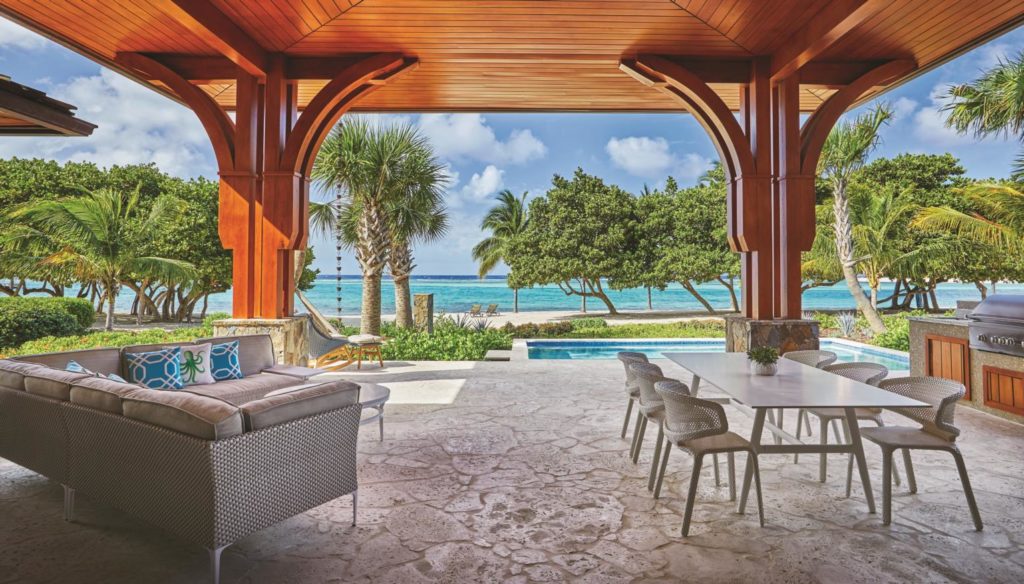

In other instances, designers are positioning swimming pools in less prominent locations. As Stringer explains, rather than placing a pool at the edge of a property overlooking the ocean, he lets the ocean view take center stage and sites the pool in an interior courtyard. Or, if it’s positioned prominently, designers will often disguise it with water features, like fountains. “When it’s not being used, a pool doubles as a beautiful water element,” Stringer says. “It’s now part of the landscape.”
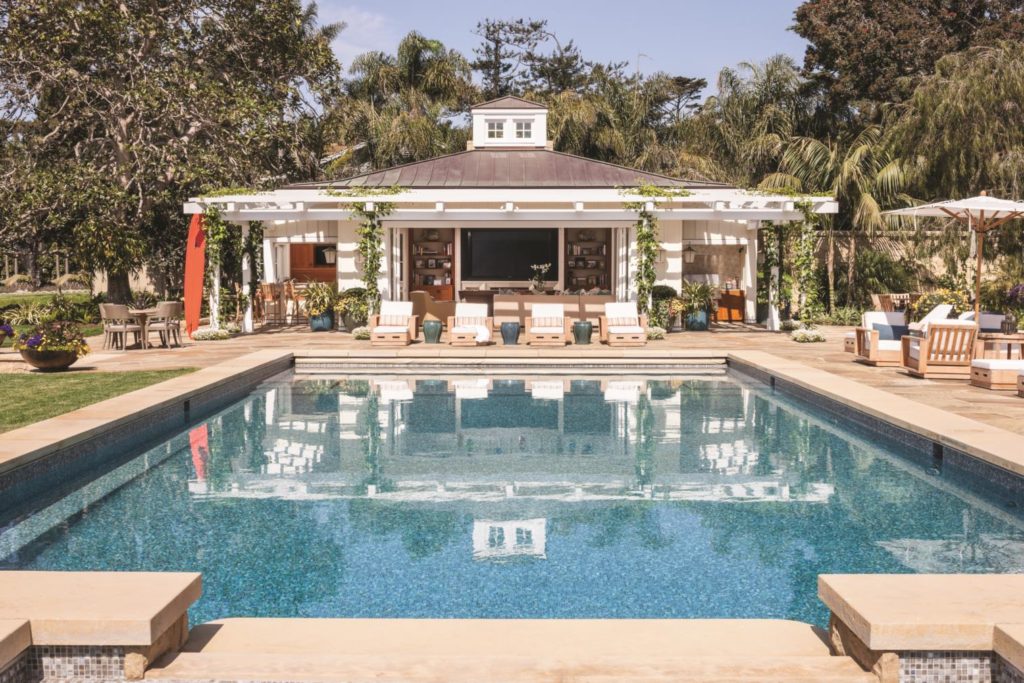

“You end up making a list of the things you want to see and the things you want to shelter from view,” Stringer continues. Tennis courts, for example, are an amenity he often attempts to conceal. “They’re cooler when they’re hidden throughout the landscape,” he explains. “It’s exciting to feel like you’re playing in a secret space.”
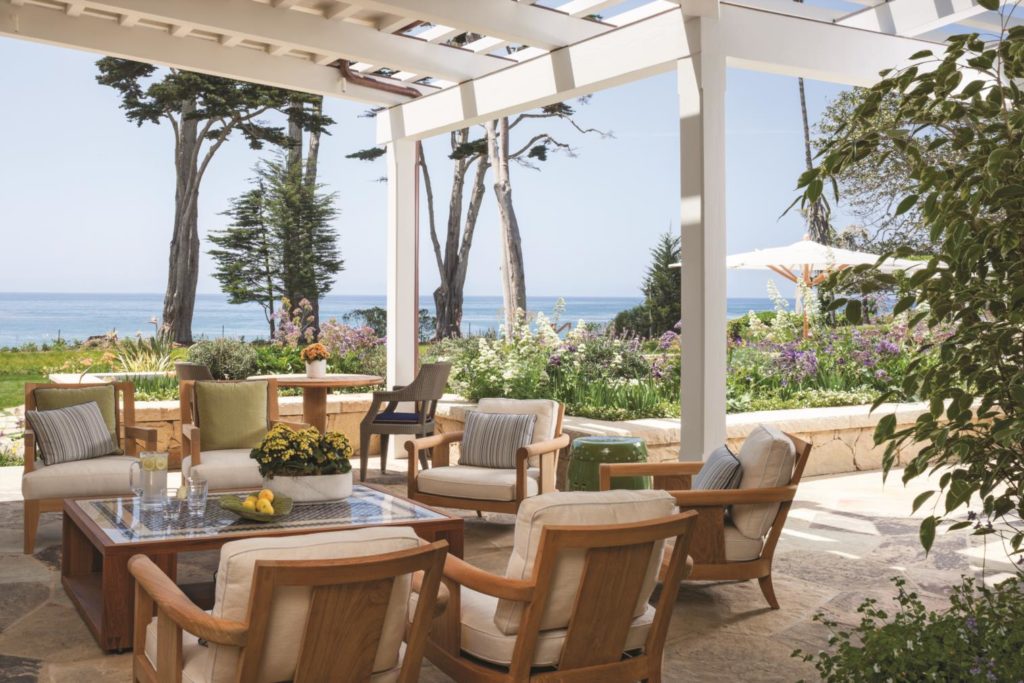

These masking efforts often improve
Water features can also elevate the traditional use of a swimming pool. “The idea of jumping into a fountain is awesome,” Stringer says, “because you’re not supposed to do that.”
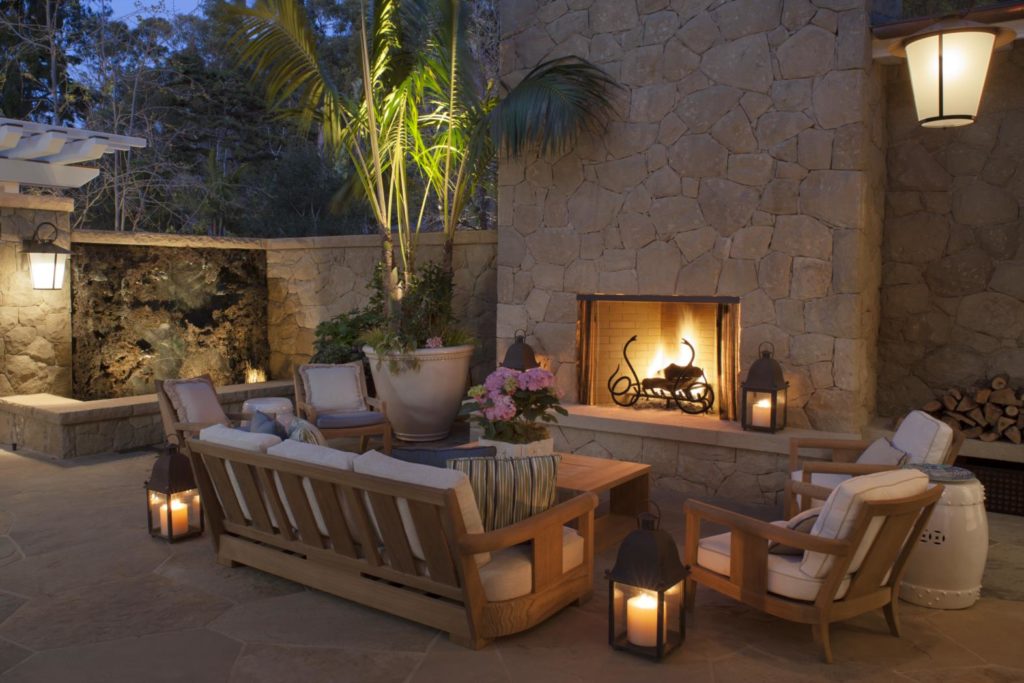

Fire, like water, is another element that defines almost every outdoor living space. “There’s something magical about sitting around a fire on a chilly night,” says Erik Evens, a partner with KAA Design and principal of his own design firm, Evens Architects. “It’s an elemental, human thing to gather around a fire.”
When incorporating outdoor fireplaces into semi-enclosed spaces, Grant Kirkpatrick, the founding partner of KAA Design, and Duan Tran, another partner in the firm, like to use Rumford Fireplaces, which are tall and shallow and designed to expel more heat into an open space.
Fire pits remain popular as well; however, Stringer purposefully avoids fire pit/coffee table combos. “We’re trying to work with themes, ideas, and materials that I think are more or less timeless. Once things get too trendy, I feel like they’re too hot to touch,” he says.
As a solution, Stringer urges clients to incorporate a traditional coffee table and a separate linear fire element set in a low wall. “The fire becomes part of the scene,” he explains, “but not the entire focus of the scene.”
Stringer also routinely equips his outdoor living spaces with sculptural products made by Fire Features, a division of Brooklyn-based Colombo Construction Corp. These products introduce fire—and sometimes water, too—in artistic and untraditional forms. “It looks like abstract reeds coming out of a reflecting pond,” he says of a recently installed fountain. “It weeps water by day and shoots fire by night.”
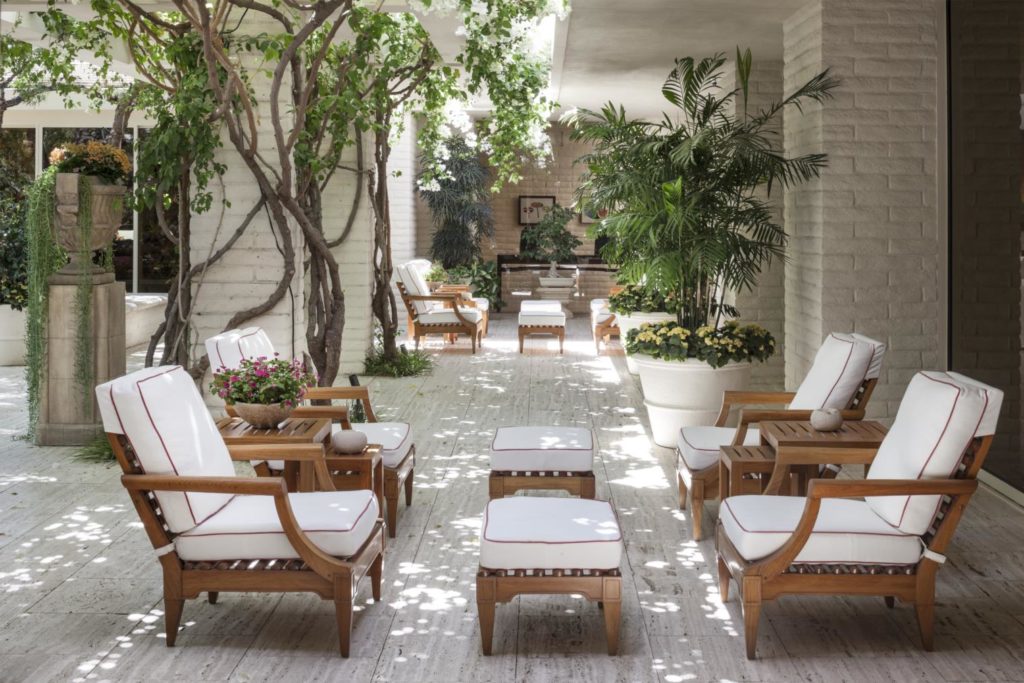

Advancements in outdoor furniture by companies like Tidelli, Janus et Cie, and McKinnon and Harris, not to mention improvements in outdoor fabrics courtesy of suppliers like David Sutherland and Perennials, play a role in evolving outdoor spaces. Technologically advanced outdoor televisions built by companies like Sunbrite and Seura do too. These luxurious
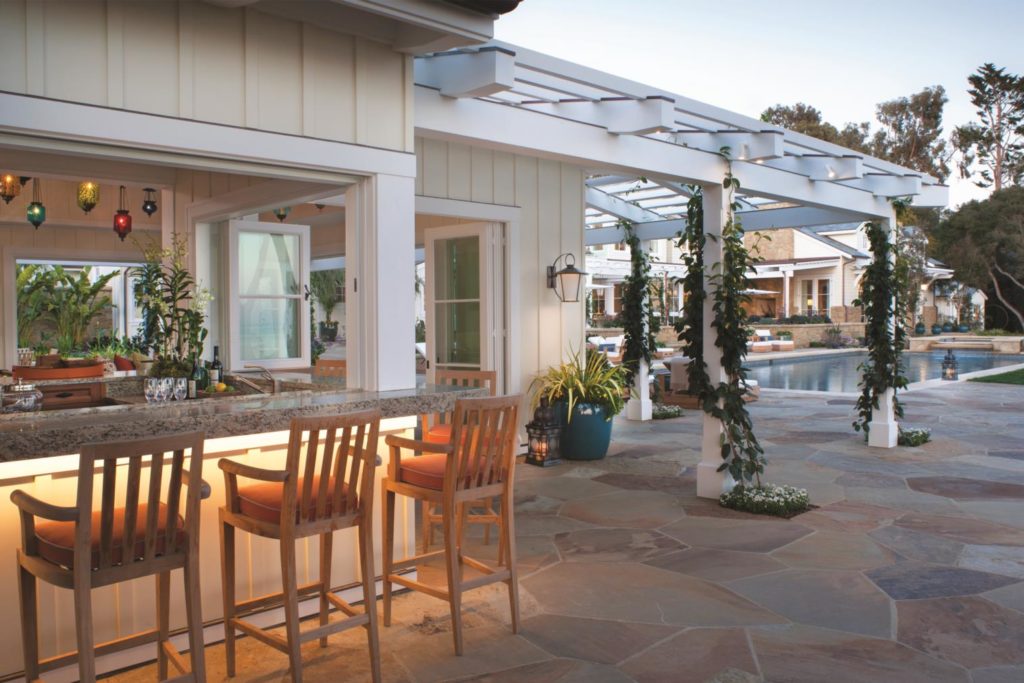

Evens points to a residential project in Malibu, completed a year ago, which offers a dramatic view of Santa Monica Bay. “We started with the grand loggia of the house facing that beautiful vista; then designed and clustered the rest of the spaces around it. That loggia is really the center of the family life,” he relates.
For a recent South Florida project, Todd Davis and Rob Brown, co-founders of Brown Davis Interiors, maximized the benefit of a sliding glass wall system in the family room by designing an angular, double-sided sofa. One side faces the fireplace and mounted television; the other side provides comfortable seating only a few feet away from the outdoor space beyond the sliding wall.
“It was the ultimate in how you do
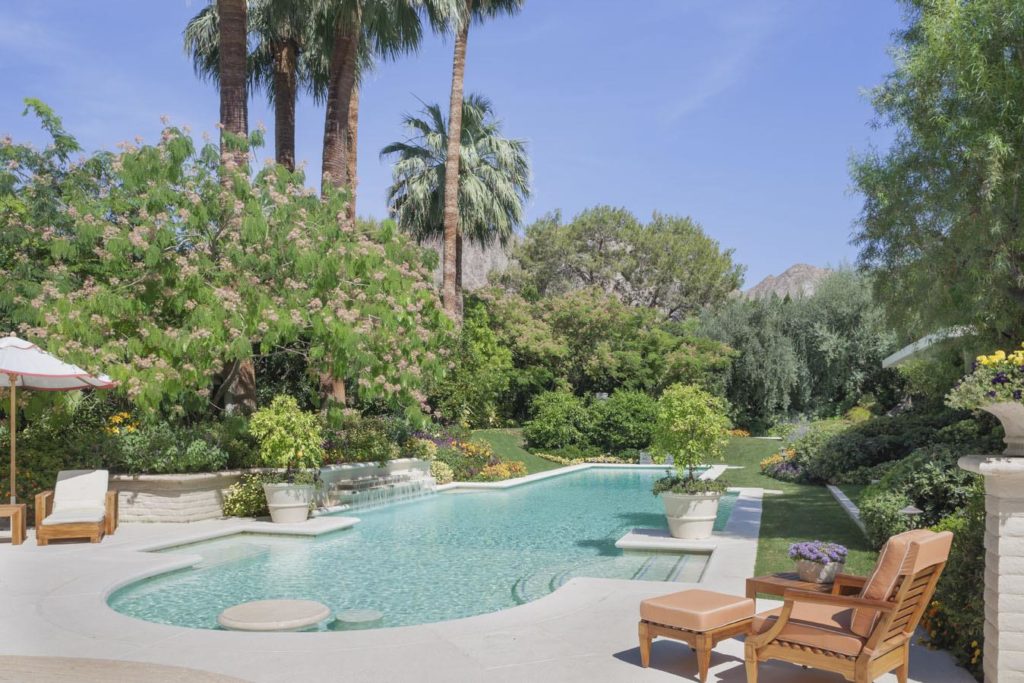

Kirkpatrick and Tran take a counterintuitive approach, especially along the California coast where gusty winds are a factor. They often position an outdoor space on the backside of
“The way that outdoor living spaces are being used is seamless,” adds Tran. “Clients are now using indoor-outdoor spaces at the same time, not just one or the other, so they have to work in tandem.”
Similarly, Stringer utilizes a trick that he learned from a landscape architect. He approaches the design of an outdoor space by first looking at it from inside. “It starts with the interior floorplan—you understand how traffic will flow in and out and how exterior development will impact the view,” he says. “Any great outdoor living space starts with what you see outside the window.”

